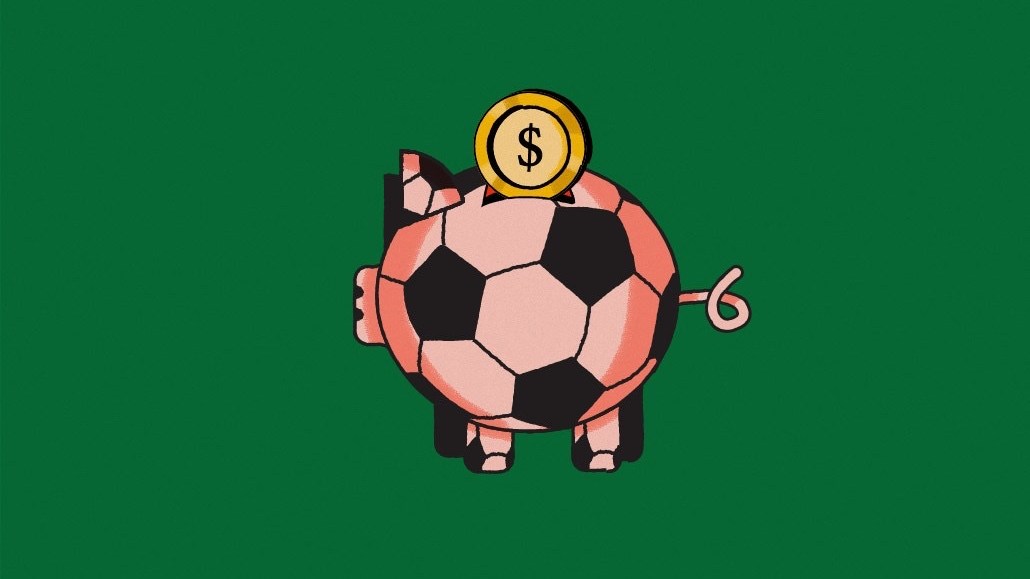Inside one media company’s strategy to monetize the Fifa World Cup

Soccer media business Footballco has spent most of 2022 trying to make hay while the sun is shining.
The opportunity in question is the Fifa World Cup. It’s like catnip for advertisers — even in a downturn where ad dollars are scarce. Better to try and get swept up in the slipstream of an event like that while it lasts. Same as ever for media owners. Even more so for a sports media company like Footballco that makes more than 90% of its revenue from ads sold on soccer news site Goal and a number of local market publications including Voetbalzone in the Netherlands and Calciomercato in Italy
“The World Cup has given us some air cover in what is a tough time in media,” said Footballco CEO Juan Delgado. “We’re trying to fill our boots as much as we can this year to then deploy some of the capital that we already have next year in order to continue to build the affiliate side of the business as well as subscriptions and some of the other areas we’re across so that we come out of this period with a set of revenue streams that are complementary.”
Which is to say advertising is a means to an end. The end being to secure enough funds to erect a more rounded commercial model in which non-ad funded revenue eventually accounts for upwards of a third (35%) of its revenue, said Delgado. For now, it’s more like 8%, and that spans affiliate advertising and subscriptions.
“Come the next World Cup, I want to be sitting on a business that has 100 million monthly uniques on web and app alongside a set of ancillary revenue streams and a set of communities that are built on this platform,” said Delgado.
The call to diversify
To be clear, Footballco isn’t in trouble. In fact, it’s arguably in rude health all things considered. It’s profitable, for starters. Of the $100,000,000 — or thereabouts — in revenue it’s set to rake in this year, around 8% of that will be spent on content, said Delgado. It’s even been on the acquisition trail of late. It has acquired three more football publications in the years since it was sold by Dazn to the U.S.-backed private equity firm TPG Capital in 2020.
That’s great, of course, especially in the current climate. Nevertheless, the best way to make money in media is — and always will be — many ways. Or at least it is as long as it’s not media rights. Aside from the fact that it’s an expensive race to be in, it would also put Footballco in competition with Dazn, which still retains a minority share in the business.
“We need to diversify the business,” said Delgado. “Otherwise if there’s another downturn then we’re going to be very financially exposed.”
Subscriptions is a case in point. And that starts with Mundial, the print magazine that had around 25,000 subscribers and customers when Footballco acquired it at the turn of the year. Since then, the business has sold magazines or merchandise to nearly 10,000 of those people. Unsurprisingly, it’s going to do more of the same, by developing a multi-layered subscription service that spans the magazine, merchandise, experiential events, and even access to online communities.
Get this mix of features right and chances are people would consider forking out more for a subscription, said Delgado.
“The idea is to see whether we can expand the RPU around the subscription business from £32 a year (the cost of four £7 quarterly Mundial magazines) to £60 a year by adding more things to that subscription package which the audience believes they’re getting more value,” he continued.
If it works, then Footballco has a template to apply to other titles. First with its women’s football brand Indivisa, and then potentially into grassroots football via its youth culture brand NXGN. That latter area is one that could be very lucrative if unraveled properly, said Delgado.
“Our content is always presented from the perspective of the elite professional, but the real sizable opportunity is reaching anyone who kicks a ball on a Sunday afternoon,” he continued. “That’s potentially millions of people who buy boots, who want to train or know about nutrition.”
Subscriptions aren’t cheap. There are many upfront (and hidden) costs to consider when building a reader revenue model, from ad tech to analytics. That said, growth is the oxygen of business and there’s a lot of it to be hoovered up from recurring revenues around smaller communities on specialist topics like Mundial’s raison d’être football nostalgia.
“The expectation here isn’t to try and get to millions of subs, but rather to focus on getting to hundreds of thousands,” said Delgado, who declined to say how many subscribers it has, pointing to the 25,000 sub figure that Mundial had when it was purchased in February.
Banking on World Cup advertising
It harkens back to the underlying rationale: advertising isn’t bad for Footballco. It can be fickle, though, with those dollars often at the mercy of an algorithm tweak or economic swing. So it makes sense to build more ancillary commercial streams around it.
It’s why the upcoming World Cup has come at an important juncture for a media business still finding its feet.
“The amount of ad dollars that are being spent out of the Middle East is disproportionately more than it was in 2018 when a lot of the advertising was being driven from advertisers in Europe,” said Delgado. “It’s both the shift in location of this year’s tournament and the shift in where the advertisers are coming from has allowed us to decouple (to a degree) from how advertising is being impacted by a World Cup in the middle of the holiday season.”
Expect video to be key to how Delgado and his team try and carry some of that momentum into next year. That’s particularly true when it comes to player-backed content such as the original Box to Box series it has done with England internationals like John Stones and Declan Rice as well as campaigns featuring Karim Benzema for the Dubai Department of Economy and Tourism.

Much of these moves are aimed at driving organic growth. But it’s difficult for any business to survive on that alone — let alone a publisher. That’s why Footballco plans to get back on the acquisition trail. Eventually, Delgado wants to shore up the business in Europe, and expand into Latin America through acquisitions.
“Sports businesses that recognize that younger audiences are more than just sports fans and develop the infrastructure to create branded experiences with their audience will have a much higher chance of bringing in revenue compared to companies who rely strictly on traditional ad dollars,” said sports marketing expert Mat Bilodeau, marketing manager at Stadium Live Studios. “Younger audiences want authentic interactions with brands in the mediums they’re familiar with (social, gaming, etc.). Branded experiences allow for two-way dialog between a brand and a sports fan.”
More in Media

Earnings from social and search players signal that AI will be a long-play investment
Giants like Google, Meta and Microsoft say investors and advertisers might have to wait longer for AI to generate a better return on investment.

Why some publishers aren’t ready to monetize generative AI chatbots with ads yet
Monetization of generative AI chatbot experiences is slow going. Some publishing execs said they’re not ready to add advertising to these products until they scale or can build a subscription model first.

Media Briefing: Publishers who bet on events and franchises this year are reaping the rewards
Tentpole events and franchises are helping publishers lock in advertising revenue.








